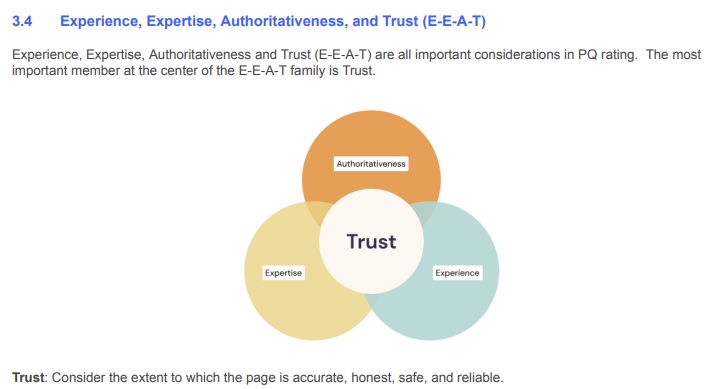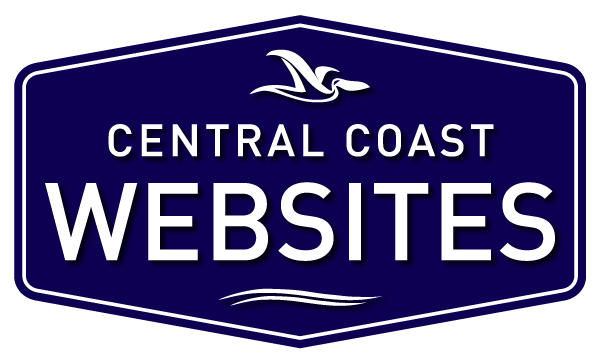The Role of E-E-A-T in Topical Authority.
Coming into 2024, Google is making it clear that topical authority is going to be a major key to ranking. You can’t talk about topical authority without talking about Googles E-E-A-T, but What is E-E-A-T? and why do you need to follow it?
We have discussed in depth topical authority in “What is Topical Authority” and “Establishing Topical Authority” and “Content Pillars”, but now its time to take a deeper look into the guidelines around creating content that not only ranks but resonates with your audience.
Navigating the complexities of Google Search can be a daunting task, especially when it comes to understanding what makes content stand out. This is where E-E-A-T comes into play, a concept that has become a key player in the world of SEO. E-E-A-T, which stands for Experience, Expertise, Authoritativeness, and Trustworthiness, acts as a guideline for Google to assess the quality and reliability of online content.
In essence, it helps Google sift through the vast ocean of information on the internet to find and prioritise content that is not just informative but also comes from a credible and experienced source. This framework is not a direct ranking factor like keywords, but it significantly influences how content is perceived and ranked by Google’s algorithms. For anyone looking to make their mark online, grasping the essentials of E-E-A-T is crucial. It’s about crafting content that not only reaches your audience but also resonates with authority and reliability, aligning with what Google considers high-quality content.
What is E-E-A-T ?
E-E-A-T is an acronym that represents four key elements Google uses to evaluate the quality of content on the web: Experience, Expertise, Authoritativeness, and Trustworthiness. Each component plays a crucial role in determining how valuable and reliable a piece of content is.
- Experience: refers to the practical knowledge or firsthand involvement the content creator has in the topic they are discussing. It’s about showing that the writer has direct, real-world experience with the subject.
- Expertise: involves a deep understanding or skill in a particular area, indicating that the content is informed, well-researched, and accurate.
- Authoritativeness: is about being recognized as a reliable source of information in your field. This involves not just being knowledgeable, but also acknowledged by others as a leader or authority in the topic.
- Trustworthiness: reflects the credibility of the content, ensuring that the information is honest, transparent, and can be trusted by readers.

The Role of E-E-A-T in Google’s Search Quality Rater Guidelines .
E-E-A-T forms a significant part of Google’s Search Quality Rater Guidelines, a document used by human evaluators to assess the quality of Google’s search results. These guidelines help raters understand what Google considers high-quality content, allowing them to provide feedback on how well the search engine is performing. While E-E-A-T itself is not a direct ranking factor, it influences the raters’ assessment of page quality, which in turn can impact how algorithms are adjusted and refined over time.
Differentiating E-E-A-T from Ranking Factors
It’s important to distinguish E-E-A-T from traditional ranking factors. Unlike measurable SEO elements such as keywords, backlinks, or site speed, E-E-A-T is more subjective and nuanced. It does not directly influence search rankings in the same way a ranking factor would. Instead, E-E-A-T is about the overall perception of content quality, guiding content creators to produce material that is not only informative but also trustworthy, authoritative, and rooted in experience. While E-E-A-T indirectly impacts how content is ranked, it’s more about aligning with Google’s vision of providing users with the best and most reliable information available.
The Evolution of E-E-A-T .
E-A-T, which stands for Expertise, Authoritativeness, and Trustworthiness, was initially introduced by Google as a benchmark to gauge the quality of web content. This concept became particularly prominent in Google’s Search Quality Rater Guidelines, which serve as a reference point for understanding what the search engine values in web pages. The primary purpose of introducing E-A-T was to ensure that users received content that was not only relevant but also created by knowledgeable and trustworthy sources, particularly in sectors where accurate information is critical.
Addition of the Extra “E” for Experience
In late 2022, Google expanded on this concept by adding an extra ‘E’ for Experience, evolving E-A-T into E-E-A-T. This addition underscored the importance of firsthand experience in creating content. The rationale behind this was to elevate content that doesn’t just come from an expert standpoint but also from a position of direct, personal involvement or observation. This change highlighted the value of experiential knowledge, especially in areas where hands-on experience provides additional credibility and depth to the content.
Impact of the 2018 Google Core Update
The significance of E-A-T, and subsequently E-E-A-T, became more pronounced following the Google Core Update in August 2018. This update had a substantial impact on a wide range of websites, particularly affecting sites in the health and wellness sectors. Many sites witnessed notable changes in their search rankings, with those demonstrating high levels of expertise, authoritativeness, and trustworthiness seeing improvements. This shift was a clear indication of Google’s commitment to prioritising content that not only answers users’ queries but does so with a high degree of reliability and authority. The update served as a wake-up call for content creators to focus more on the quality and credibility of their content, beyond just optimising for keywords and backlinks.
The Components that Make E-E-A-T .
Experience:
Experience in the context of E-E-A-T refers to the creator’s personal involvement or direct interaction with the topic at hand. This component emphasises the value of content derived from real-life experiences, acknowledging that firsthand knowledge can significantly enhance the authenticity and relevance of information. Google’s Quality Raters are trained to identify content that showcases genuine experience, such as detailed product reviews by users who have actually used the product, or travel blogs written by individuals who have visited the destinations they’re discussing. This focus on experience ensures that the content is not just theoretical but grounded in practical reality.
Expertise:
Expertise is about demonstrating a deep understanding or skill in a specific area. It’s particularly crucial in fields that directly impact people’s health, finances, or safety – often referred to as Your Money or Your Life (YMYL) topics. Google assesses expertise by looking at the credentials, qualifications, and the depth of knowledge presented in the content. For instance, medical advice should come from qualified health professionals, and financial advice should be written by experts with relevant experience. However, expertise isn’t limited to formal education; it can also include practical knowledge in less critical fields, like hobbies or everyday activities, where the content creator’s skill and comprehensive understanding are evident.
Authoritativeness:
Authoritativeness extends beyond personal knowledge and expertise to how others perceive and recognize your authority in a field. This component is often gauged by the content’s reputation among other experts and authoritative sources. For example, an article referenced or cited by reputable institutions or industry leaders gains credibility. Authoritativeness can be bolstered by factors such as awards, recognitions, or a strong presence in the community related to the topic.
Trustworthiness:
Trustworthiness is arguably the most critical aspect of E-E-A-T. It’s about establishing the credibility and reliability of not just the content but also the website where it’s published. Trustworthy content should be accurate, transparent, and provide honest representations of information. Factors that influence trustworthiness include clear author attribution, factual accuracy, transparent sourcing of information, and the absence of deceptive practices. For a website, trustworthiness also encompasses aspects like secure browsing (HTTPS), clear contact information, and a straightforward user interface that enhances user experience and safety.
Practical Application of E-E-A-T in Content Creation .
Tips for Incorporating Experience into Content
Incorporating experience into your content involves showcasing firsthand knowledge or personal involvement with the topic. Here are some ways to do this:
- Personal Narratives: Share personal stories or experiences related to the topic. For instance, if you’re writing about travel destinations, include personal anecdotes from your trips.
- Case Studies and Examples: Use real-life case studies or examples to illustrate points, particularly in areas like business or education.
- Visual Evidence: Add photos, videos, or other visual proofs of your experiences. This could be images of places you’ve visited or products you’ve used.
- Customer Reviews and Testimonials: If applicable, include customer reviews or testimonials to demonstrate real-world application and satisfaction.
Demonstrating Expertise in Various Niches
Demonstrating expertise requires showing deep knowledge and skill in your content area:
- Credentials and Qualifications: Highlight your credentials, especially for YMYL topics. Display qualifications, certifications, or awards that establish your expertise.
- In-depth Content: Publish detailed, well-researched content that covers topics comprehensively.
- Educational Content: Offer tutorials, guides, or how-to articles that help readers understand complex topics easily.
- Industry Updates: Stay updated with industry trends and news, reflecting current knowledge in your field.
Strategies for Building Authoritativeness
To build authoritativeness, your content needs recognition from others in your field:
- Networking with Peers: Engage with industry leaders or peers through collaborations, interviews, or joint ventures.
- Guest Posting and Contributions: Contribute to reputable sites or publications in your niche to gain wider recognition.
- Collecting Quality Backlinks: Earn backlinks from authoritative websites, which serve as a “vote of confidence” for your content.
- Active Online Presence: Maintain an active and authoritative presence on social media and industry forums.
Ensuring Trustworthiness in Online Content
Trustworthiness revolves around the credibility and reliability of your content:
- Fact-Checking: Ensure all information is accurate and backed by credible sources.
- Transparency: Be transparent about sponsorships or affiliations. Clearly disclose any potential biases.
- User-friendly Website: Maintain a secure, easy-to-navigate website with clear contact information.
- Responding to Feedback: Actively respond to user comments and feedback, demonstrating engagement and concern for accuracy.
E-E-A-T in Different Content Niches .
Applying E-E-A-T in YMYL (Your Money or Your Life) Categories
In YMYL categories, which include topics related to health, finance, law, and safety, E-E-A-T is particularly crucial due to the significant impact this content can have on readers’ lives. Here’s how to apply E-E-A-T in these niches:
- Showcase Credibility with Credentials: For content in these niches, it’s essential to highlight professional credentials, qualifications, and real-world experience. For instance, health advice should be authored or reviewed by healthcare professionals.
- Refer to Trusted Sources: Cite authoritative sources like research papers, official guidelines, and expert opinions to reinforce the trustworthiness of your content.
- Avoid Misinformation: Given the potential impact of YMYL content, it’s critical to avoid misinformation. Ensure all content is accurate, up-to-date, and in line with current industry standards and practices.
E-E-A-T for Non-YMYL Topics
In non-YMYL niches, such as hobbies, entertainment, or general lifestyle topics, E-E-A-T still plays a significant role, but the approach can be more flexible:
- Demonstrate Practical Knowledge: Even without formal credentials, showcasing practical knowledge or personal experience is valuable. For example, a cooking enthusiast can share personal recipes and cooking tips, demonstrating expertise through hands-on experience.
- Build Trust with Authenticity: Establish trust by being genuine and honest in your content. Share personal stories, successes, and even failures to connect authentically with your audience.
- Engage with Your Community: Build authoritativeness by engaging with your community, participating in relevant discussions, and being recognized as a knowledgeable source within your niche.
Regardless of the niche, incorporating E-E-A-T into your content strategy means focusing on creating high-quality, reliable, and useful content that resonates with your audience and meets Google’s quality standards.
The Role of E-E-A-T in SEO Strategy .
How E-E-A-T Influences SEO
While E-E-A-T is not a direct ranking factor like keywords or backlinks, it significantly influences SEO in several ways:
- Enhancing Content Quality: High-quality content that aligns with E-E-A-T principles tends to engage readers more effectively, leading to longer dwell times and lower bounce rates. These user engagement metrics are noticed by search engines and can indirectly influence rankings.
- Building Credibility and Authority: Websites that consistently produce content demonstrating high E-E-A-T are more likely to be regarded as authoritative sources in their field. This credibility can lead to more backlinks from reputable sites, which are direct ranking factors.
- Aligning with Search Intent: E-E-A-T helps ensure content aligns with user search intent, providing the relevant, trustworthy information users are seeking. Satisfying search intent can positively impact a site’s visibility and ranking on search engine results pages (SERPs).
Misconceptions and Debates About E-E-A-T as a Ranking Factor
There are common misconceptions and ongoing debates regarding the role of E-E-A-T as a ranking factor in SEO:
- E-E-A-T as a Non-Measurable Factor: Unlike clear-cut SEO elements such as keywords, E-E-A-T is more subjective and not directly measurable. This has led to debates about its status as a ranking factor.
- Indirect Influence on Rankings: While Google has stated that E-E-A-T is not a direct ranking factor, there is a consensus in the SEO community that it influences rankings indirectly. High E-E-A-T can enhance user experience and site reputation, which are critical for SEO success.
- Misunderstanding the Scope: Some may misunderstand E-E-A-T as a set of strict rules or a checklist, but it’s more about the overall quality and perception of the content.
- Dynamic Nature of SEO: The SEO landscape is continually evolving, and the influence of factors like E-E-A-T can change over time. It’s important to stay updated with the latest guidelines and practices from Google.
In summary, while E-E-A-T may not be a direct ranking factor in the traditional sense, its principles are deeply intertwined with effective SEO strategies, playing a crucial role in the creation of content that is both favourable to search engines and valuable to users.
E-E-A-T and AI-Generated Content
With the rapid advancement of artificial intelligence (AI) in content creation, understanding the intersection of AI and E-E-A-T becomes essential. AI-generated content, while efficient, presents unique challenges in meeting E-E-A-T standards:
- Experience and AI: AI lacks real-life experiences, a key element of the ‘Experience’ in E-E-A-T. Content generated by AI might miss nuances and insights that only come from actual human experience, which can be a significant drawback in areas where firsthand knowledge is vital.
- Expertise and AI: While AI can produce content that appears knowledgeable, it doesn’t possess true expertise or credentials. It’s crucial to supplement AI-generated content with human oversight to ensure it meets the expertise criteria, especially in YMYL topics.
- Authoritativeness and AI: AI-generated content might struggle to establish authoritativeness as it lacks recognition by peers and experts in the field. Authoritative content often requires endorsements, citations, or contributions from acknowledged experts, which AI alone cannot achieve.
- Trustworthiness and AI: AI-generated content can raise questions about trustworthiness, especially if the content lacks accuracy or is not fact-checked by human experts. Transparency about the use of AI in content creation can help maintain trust with the audience.
While AI can be a helpful tool in content creation, it’s important to closely monitor and supplement AI-generated content to ensure it aligns with E-E-A-T principles. Balancing AI efficiency with human expertise and experience is key to producing high-quality content that resonates with both search engines and real-world users.
Measuring the Success of E-E-A-T in Content .
Evaluating how well your content adheres to E-E-A-T principles is crucial for understanding its impact and effectiveness. Here are ways to measure and assess the success of your E-E-A-T strategy:
- User Engagement Metrics: Monitor how users interact with your content. Metrics like time on page, page views, and bounce rates can indicate how engaging and useful your audience finds the content. Higher engagement often correlates with better adherence to E-E-A-T principles.
- Feedback and Comments: User feedback, comments, and discussions around your content can provide qualitative insights into its perceived expertise, authoritativeness, and trustworthiness.
- Search Rankings and Visibility: Observe changes in your search rankings and online visibility. While E-E-A-T is not a direct ranking factor, improvements in these areas can suggest that your content is aligning well with E-E-A-T guidelines.
- Backlink Profile: Analyze the quality and nature of backlinks to your content. Links from reputable and authoritative sites can be a strong indicator of your content’s authoritativeness and trustworthiness.
- Content Audits: Regularly conduct content audits to assess whether your content remains accurate, up-to-date, and continues to meet E-E-A-T criteria. This can involve revisiting older content and updating it to maintain high E-E-A-T standards.
By continually monitoring these aspects, you can gauge the effectiveness of your E-E-A-T strategy and make informed adjustments to enhance the quality and impact of your content.
Take your Content to the Next Level & Boost your Topical Authority.
So what is E-E-A-T? Now you have understanding and implementing E-E-A-T in your digital content strategy is not just about adhering to Google’s guidelines; it’s about elevating the overall quality and value of your online presence. In an era where information is abundant, distinguishing your content through genuine experience, verified expertise, recognized authoritativeness, and unwavering trustworthiness is key to standing out.
Embracing E-E-A-T principles means committing to a content strategy that prioritises depth, accuracy, and user value above all else. It’s a commitment to not only meet the immediate needs of your audience but to build a lasting relationship based on trust and reliability. Whether you’re managing a large-scale website or a personal blog, focusing on E-E-A-T can significantly enhance your online visibility and credibility.
As you move forward in crafting your digital content, remember that E-E-A-T is an evolving concept in the dynamic world of SEO. Staying informed about the latest trends and updates from Google, and continually adapting your strategy, will ensure that your content remains relevant, authoritative, and trusted by both your audience and search engines. In doing so, you’re not just optimising for algorithms; you’re creating content that truly resonates and makes a difference.




